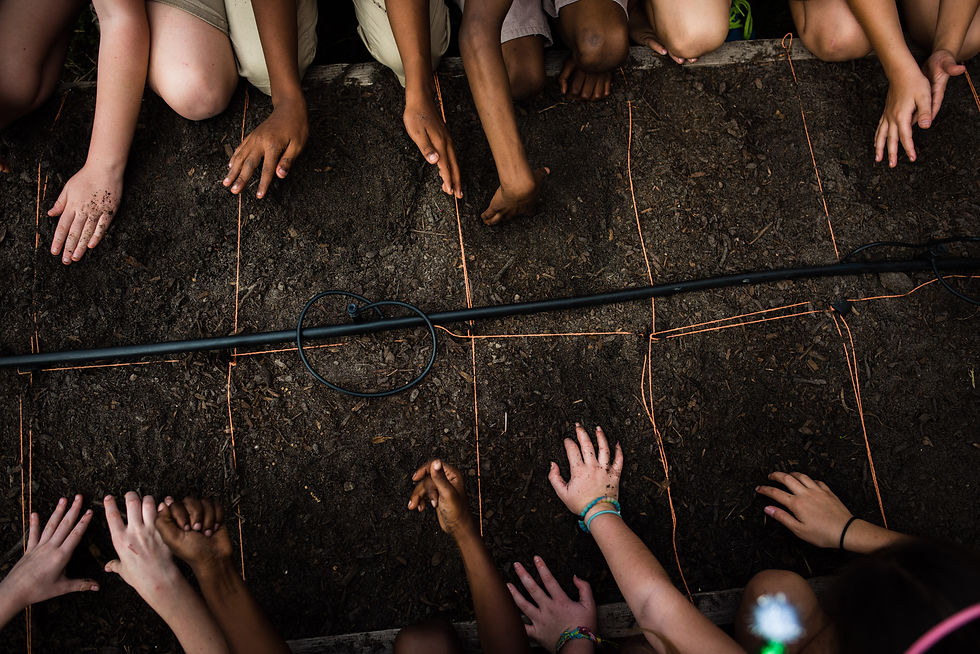Growing Deeper Learning in Your Classroom: How Agriculture Education Enhances eLearning
- agforlife
- Jun 30, 2025
- 2 min read
In today’s digital world, learning can happen anywhere — on a screen, in a classroom, or in a field. But in a sea of online content and quick answers, how do we help students slow down, think critically, and truly understand what they’re learning?
The answer lies in deeper learning — a teaching approach that prioritizes curiosity, real-world problem solving, and lasting understanding. And one of the most powerful ways to bring that to life? Agriculture education.
Whether you’re teaching in person or online, agriculture offers an engaging, meaningful lens that makes learning stick.

What Is Deeper Learning?
Deeper learning is about more than memorizing facts. It’s about helping students:
Apply knowledge in new situations
Think critically and analyze information
Collaborate and communicate effectively
Connect what they learn to real-life experiences
When students engage in deeper learning, they don’t just remember — they understand.
Why Agriculture?
Agriculture is more than cows and combines. It’s a living, breathing system that intersects with:
Science (plant biology, animal care, ecosystems)
Social studies (land use, food security, Indigenous knowledge)
Math (measurement, data, economics)
Technology (drones, sensors, AI in food production)
Environmental education (climate, sustainability, biodiversity)
Because agriculture connects to so many subjects, it naturally supports cross-curricular learning and gives students real-world reasons to care.
5 Ways to Use Agriculture to Foster Deeper Learning
1. Start with Big Questions
Ask students: Where does our food come from? Who decides what gets grown? How does climate affect farming? These open-ended questions invite exploration, debate, and investigation.
2. Connect to Students’ Lives
Food is personal. Every student eats, shops, and has a cultural relationship with food. Use that as a springboard to explore identity, equity, and sustainability.
3. Make It Hands-On
From virtual farm tours to planting a classroom garden or analyzing food labels, experiential learning deepens engagement. Even in eLearning environments, students can track what’s in their fridge or research a product's journey from farm to fork.
4. Integrate Storytelling
Bring in real farmer voices, Indigenous knowledge keepers, or ag professionals. Hearing stories makes learning more memorable — and builds empathy and understanding.
5. Build Projects, Not Just Assignments
Have students design a sustainable farm, create a campaign to reduce food waste, or present on careers in ag. These types of performance tasks show real understanding and foster skills that last beyond the unit.
The Digital Bonus: How eLearning + Agriculture Education Work Together eLearning platforms are ideal for:
Hosting videos, simulations, and digital field trips
Tracking learning progress with interactive quizzes
Offering choice: students can explore what interests them most
Giving space for reflection through journals or blogs
When combined with agriculture’s real-world relevance, eLearning becomes more than screen time — it becomes meaningful time.

Final Thoughts
Deeper learning doesn’t require more time — just more intention. By using agriculture as a teaching lens, you can create more engaging, cross-curricular experiences that help students make connections, ask better questions, and think critically about the world around them.
Want support bringing agriculture into your teaching?
Join one of Ag for Life’s Teacher Professional Development (PD) sessions to explore ready-to-use resources, strategies for deeper learning, and new ways to bring your classroom to life — online or in person.
👉 Email us to Learn more: info@agricultureforlife.ca



